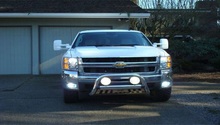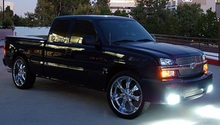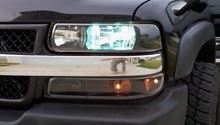Chevrolet Silverado: Window Tint Modifications
Tinted windows add a bit of edge and attitude to almost any car. While they look great, limitations for window tinting often vary from one state to the next. Continue reading to find out more.
This article applies to the Chevrolet Silverado GMT800, GMT900, and K2XX (1999-Present).
Tinting your truck's windows can instantly enhance its appearance. However, some owners turn to window tinting for more privacy or to keep the sun from damaging the interior of the car, especially leather seats. It's not uncommon to see vehicles with more deeply tinted windows in southern states, as this keeps the interior cool while keeping harmful UV rays out. Before you decide to tint your windows, it's helpful to know what's acceptable by law (and what isn't). If you have any questions or concerns, you can always reach out to your local DMV for clarification.
Window Tint Modifications
Unless you plan on driving exclusively off-road, you'll need to get an idea of what's allowed by law and what isn't. In general, states with a warmer year-round climate allow darker tints than more northern states. If you're like most Silverado owners who want to tint their windows, you're interested in finding the level of tint that will look best on your truck without breaking the law. Another consideration is the DIY factor. Window tinting isn't the most difficult modification, but it is a bit tedious and can come out looking less than desirable if something goes wrong. For this reason, most Silverado owners are better off taking their truck to a professional to get the job done. Here's a window tint guide to help you decide what's best for your truck.
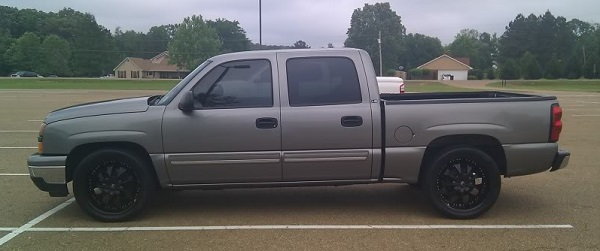
Light Tint (50% and Higher)

DIY Cost – $50+
Professional Cost – $100-$250
Skill Level – Moderate; requires patience and close attention to detail.
Most Silverado trucks come standard with 70 percent tint. With this level tint, there is some protection from the sun, but the driver can easily see out of the windshield. The driver is also visible to others on the road. Obviously, a 50% tint will allow 20% less light through the glass and be a bit darker than it left the factory. It is pretty common to have this lighter tint on the front windows and a darker tint on the back windows. Recommended for drivers who want to stay visible.
Moderate Tint (35-50%)
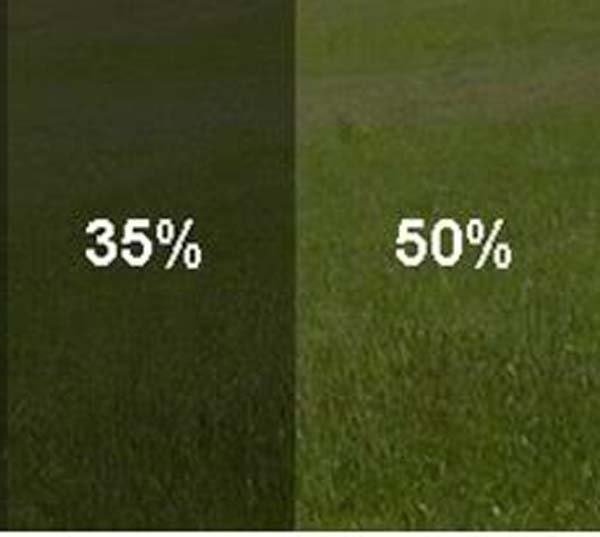
DIY Cost – $50+
Professional Cost – $100-$250
Skill Level – Moderate/Hard; requires close attention to detail.
A more intermediate tint gives the vehicle a sleeker appearance. It also acts as a better privacy shield. Most states allow up to 50 percent tint; although, many drivers have trouble estimating how much tint this actually is. If you're concerned about UV rays, you should know that a tint of just 80 or 90 percent can be quite beneficial. Recommended for drivers who want a sleeker appearance.
Dark Tint (20-30%)

DIY Cost – $50+
Professional Cost – $100-$250
Skill Level – Hard; requires prior knowledge.
Windows with tint this dark are very difficult to see into (and out of). For this reason, they are generally illegal in most states. However, drivers who live in very warm climates may be able to legally get away with window tinting in this range. Recommended for drivers living in warmer climates.
Very Dark Tint (5-15%)

DIY Cost – $50+
Professional Cost – $100-$250
Skill Level – Hard; requires prior knowledge.
This is the darkest possible tint, and it's illegal in most states. It's called limousine tint for a reason; it's virtually impossible to see into the vehicle. Most drivers with tint this dark also report trouble seeing out of the car, especially in darker settings. Tint this dark is not recommended due to legal issues.
Related Discussions, and Site
- Window Tint? - ChevroletForum.com
- Window Tint Pictures - ChevroletForum.com
- Tint Darkness Percentages - Tinting-Laws.com


